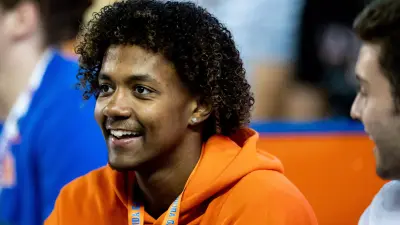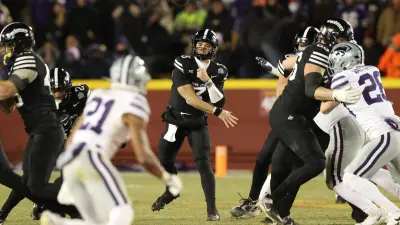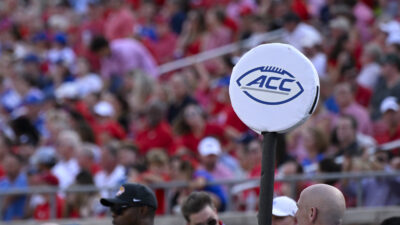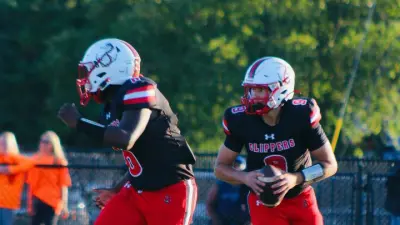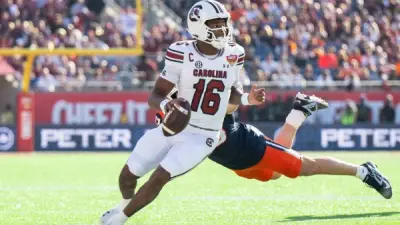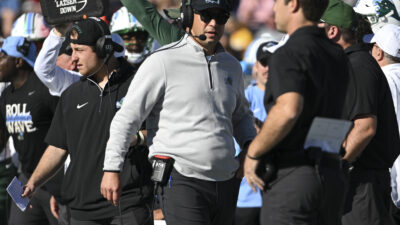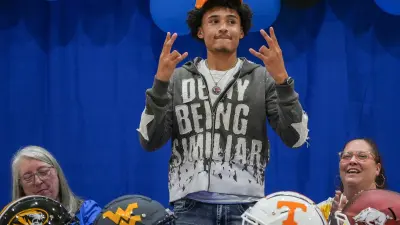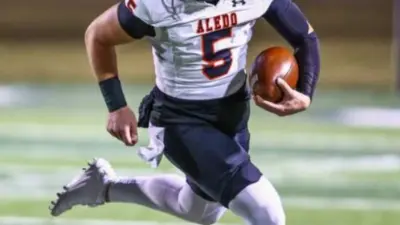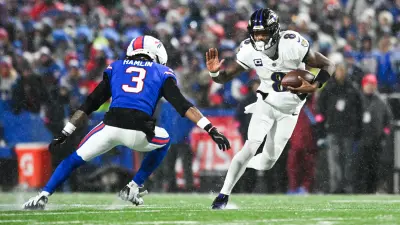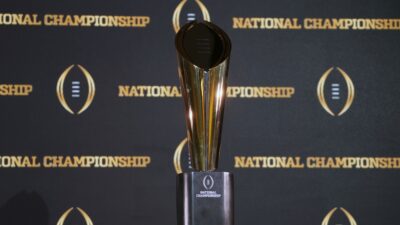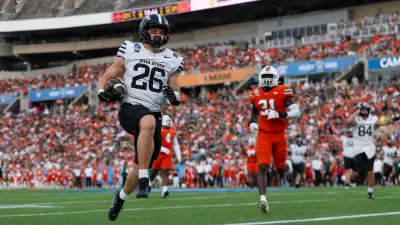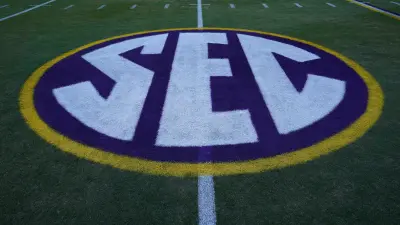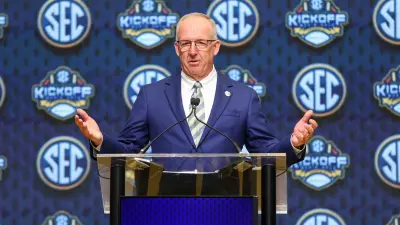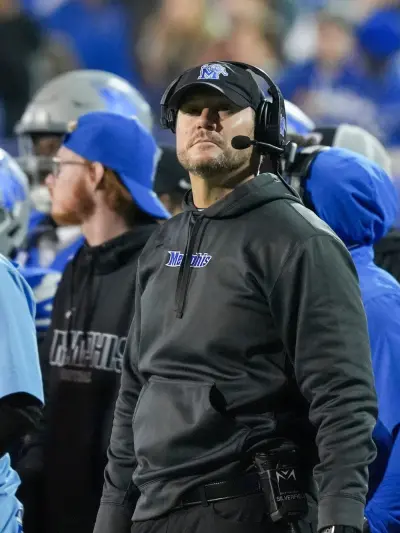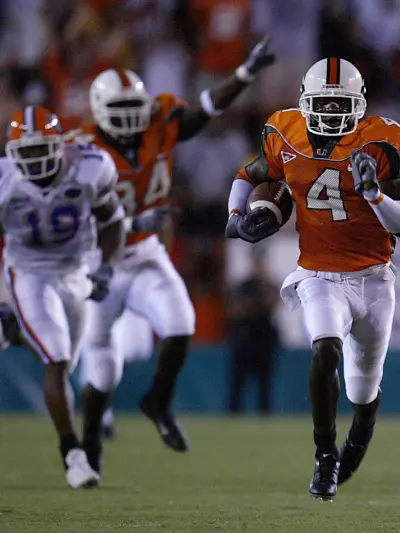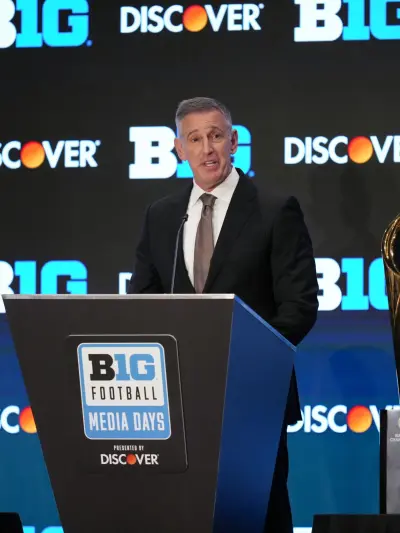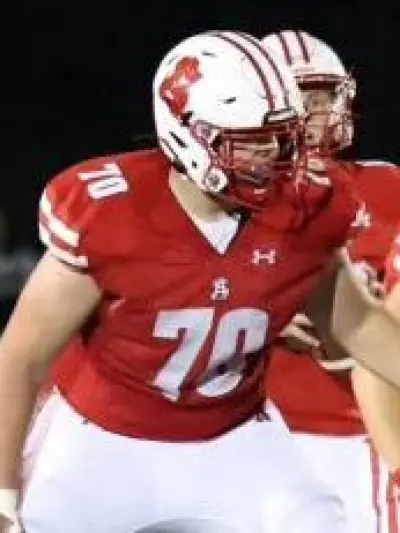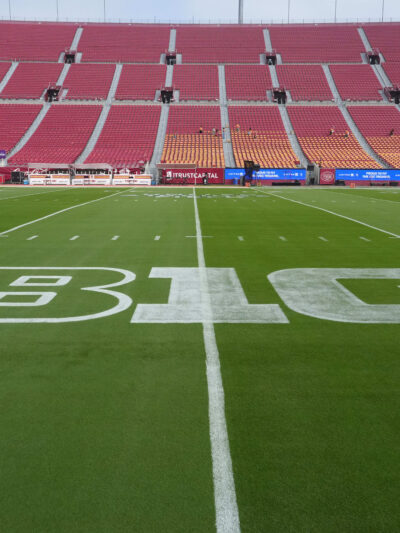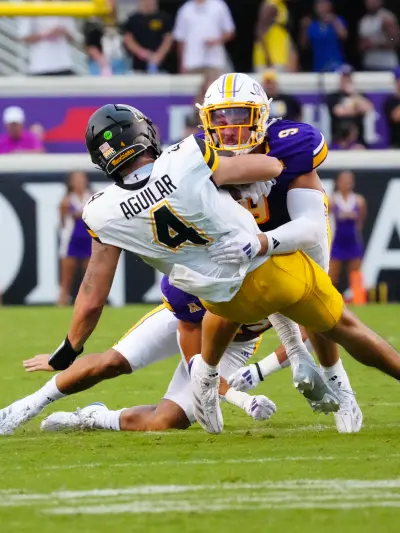Stewart Mandel and Andy Staples, lead college football writers for The Athletic, collaborated on an article published this morning on the details of Jaden Rashada’s unprecedented recruitment.
Rashada had a NIL deal in place with the University of Florida that The Athletic reports was worth $13.85 million over the next four years. In comparison Pittsburgh Steelers rookie quarterback Kenny Pickett, who was a first round selection in the NFL Draft and a Heisman finalist his final year at Pitt received a $14.1 million NFL rookie contract over four years.
Here are my key takeaways from that article and what is next in college football recruiting:
#1 Elite Prospects are Well Aware of the “Money Bag”
The testimonial from George Whitfield, a quarterback coach who worked the Elite 11 event, describing the awkwardness Rashada felt from the event threw off his game. “The kids openly talked about his money around him on the field, and Rashada is standing there. They’re asking him, ‘How does it work? Do you get it all at once?’ And you can tell how uncomfortable he was.
“It was so awkward, and it only got worse. Balls were going in the dirt.”
One of the more impactful quotes from Whitfield in the article describes the pressure these kids wear, “There’s just so much there with that realization, that I’m carrying an $11 million backpack on my back, and he’s just trying to measure up.”
With recruiting services that rate prospects, coupled with the popularity of college football, NIL has opened the lid for more people to make money off young athletes. While NIL allows athletes to make a lot of money for themselves, there is pressure that comes with it, whether it is from fans, teammates, coaches, fellow players, and even from yourself.
More Sports News
Think about the pressure Rashada felt at 17 and 18 years old, being told he was special, and everyone protecting him because he is worth to people a cut of millions of dollars that is very transformative.
I cannot imagine the pressure and to me the speculation of what every elite prospect can bring financially can be very destructive to an individual. Rashada got lucky in some ways, but you can take away the toll he felt in the article when he did not perform up to par at the Elite 11, he was apologizing for his efforts, describing his personal life as “crazy.”
#2 The New Power Agents
The name to follow is Mike Caspino, an Orange County California attorney, who represented Rashada amongst two dozen other high end prospects. Caspino also represented fellow California quarterback Nico Iamaleava, who received $8 million from the collectives at the University of Tennessee.
Prior to being represented by Caspino, Rashada took an official visit to Tennessee and the observation Harlen Rashada, Jaden’s father, made was interesting, “The irony of that is my son was talking to Tennessee the same time Nico was,” Harlen said after the visit. “They were a (collective) that was a little fast-forward thinking.”
With this new era of college football, both players and coaches will have a new layer of bureaucracy as attorneys like Caspino will play a pivotal role. While ultimately coaches and players have the ultimate say on the initial steps of recruitments, things may break down upstream and this is the first publicly known example.
#3 Rashada Signed his NIL Deal Prior to his Letter of Intent
What seems alarming with these NIL deals with elite prospects is it seems the cart is being put in front of the horse.
In Rashada’s case, he received $500,000 prior to signing his letter of intent. The Athletic had a sports attorney review the contract and the NCAA policies, and deemed the recruiting inducement of Rashada was problematic.
A question that is alarming is do these collectives have too much power and influence over programs? To me, the case with Jaden Rashada demonstrates that collectives have too much power and influence over programs.
During his recruitment, Miami had a strong head start in gaining the commitment from Rashada. Per The Athletic, Miami superbooster John Ruiz had negotiated a $9.5 million deal with Rashada centering around promoting his LifeWallet app, an application centered around a person’s health.
When Caspino explained he left millions on the table from the Florida Gators collective, something changed, the article suggests. It felt the commitment to the Hurricanes was forced financially versus what Rashada wanted, something his dad Harlen said Jaden had “buyer’s remorse”, this gave Florida a second shot to land him.
What is alarming is that these collectives are still tapping on the shoulders of these kids. Somehow beyond the control of coaches, the collectives are still targeting these kids.
I look at the Texas A&M historic class in 2022, the one Alabama coach Nick Saban insinuated that was the best class money can buy. One has to wonder if the implosion on the field we saw from the Aggies rooted from a collective too eager to interject themselves?
#4 Termination Clauses Imply Power from Collectives
The power these collectives have in their arrangements was displayed on the termination language in Rashada’s NIL deal.
In the deal, the language read in the termination section began with, “Collective may, in its sole and absolute discretion, terminate this Agreement.” It was followed by three key points of termination:
- If the contract is found to violate Florida law;
- If the contract is found to violate school rules or rules the school must follow (such as NCAA rules);
- If Rashada doesn’t reside in Gainesville.
The question now is these termination clauses a tactic collectives can use to undermine a coach and force unnecessary issues? While the bullet points seem cut and dry, it is the beginning language that the collectives have the sole and absolute discretion to terminate. That suggests power and control from these boosters.
#5 The NCAA has a Hot Mess on Their Hands
As I wrote in January about the fractured state of the NCAA, this situation doesn’t help the NCAA.
Right now, the NCAA has an instance with Rashada where independent collectives were negotiating money for service even before he was enrolled as a student. Furthermore, it brings to the forefront a legitimate question of the influence of these collectives, because if they are paying a player like Rashada $13.85 million, what sort of academics is Rashada taking? What if a coach needed to bench Rashada for discipline in a major game, does that happen with these collectives?
If anything, the University of Florida administrators reasserted their power in a way with releasing Rashada from his letter of intent.
Ultimately though, the NCAA has to figure out the balance here.
In my estimation, official collectives at Miami and Florida should be outlawed. If an independent individual, booster, or any business would like to engage on a NIL deal with an athlete, to me that is fine. But there shouldn’t be a collective wielding this much power.
The hard part is how will the NCAA enforce this? To me, the only way any entity can engage with a student athlete for NIL is if they register with the NCAA and submit annual documentation of payments to athletes.
For now we wait for the next move from the NCAA.
